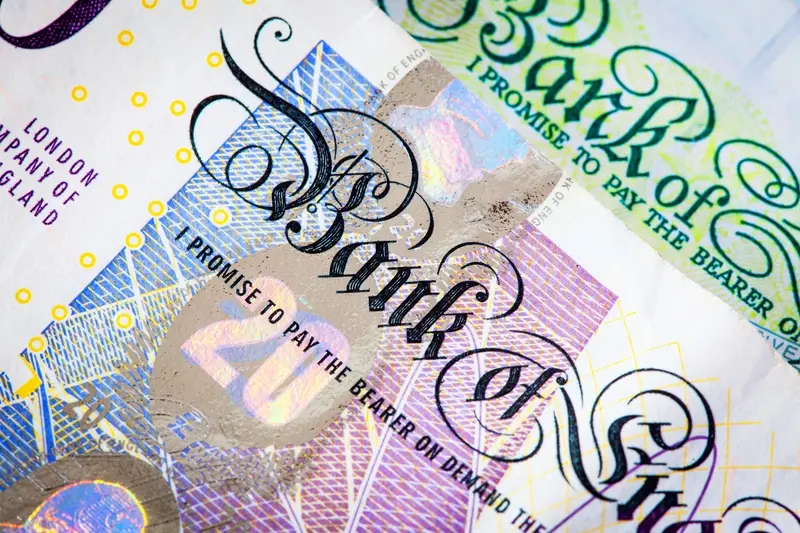
European equities were on the up, though the FTSE 100 surrendered some of its morning progress after the Bank of England left rates unmoved, despite the US Federal Reserve’s bumper 50 basis point cut on Wednesday.
The BoE said it will adopt a ‘gradual approach’ to easing monetary policy.
‘Monetary policy will need to continue to remain restrictive for sufficiently long until the risks to inflation returning sustainably to the 2% target in the medium term have dissipated further,’ it added.
The pound traded at $1.3306 in the wake of the decision, up from $1.3198 at the time of the London equities close on Wednesday. It had bought $1.3270 before the decision.
The FTSE 100 index was up 77.34 points, 0.9%, at 8,331.02, down from where it stood before the decision, however. It hit an intraday high of 8,370.47 points in late morning dealings.
The FTSE 250 surged 240.10 points, 1.2%, at 21,075.41, and the AIM All-Share rose 4.27 points, 0.6%, at 746.83.
The Cboe UK 100 rose 1.0% to 834.03, the Cboe UK 250 added 1.1% to 18,590.59, and the Cboe Small Companies rose 0.1% to 16,699.13.
In European equities on Thursday, the CAC 40 in Paris jumped 2.0%, while the DAX 40 in Frankfurt was up 1.5%. The DAX topped the 19,000 point mark for the first time ever.
‘All the signs were pointing to a rate hold this month, so it’s not hugely surprising that the Bank of England has kept rates at 5%. With inflation sticking above the 2% target and expected to edge up in the autumn, the Bank was always likely to remain cautious although the markets still expect at least one further rate reduction before the end of the year, perhaps in November,’ SPF Private Clients analyst Mark Harris commented.
The BoE voted with an 8-1 majority to keep bank rate unmoved. Swati Dhingra voted for a 25 basis point cut.
On those that preferred to keep rates unmoved, the BoE said: ‘There was a range of views among these members on the degree to which the unwinding of past global shocks, the normalisation in inflation expectations and the current restrictive policy stance would lead underlying domestic inflationary pressures to continue to unwind, or whether these pressures could prove more entrenched, possibly as a result of more structural factors or greater momentum in demand. Despite these differences of view, the current policy stance was judged to be appropriate. For most members, in the absence of material developments, a gradual approach to removing policy restraint would be warranted.’
The euro climbed to $1.1172 midday Thursday UK time, from $1.1113 at the European equities close on Wednesday. Against the yen, the dollar was trading at JP¥142.95, climbing from JP¥141.97.
The US Federal Reserve kicked off the rate-cutting cycle with a bang. The central bank reduced the federal funds rate to 4.75%-5.00% from 5.25%-5.50%, where it has been since July 2023.
Outside the emergency rate cuts during Covid, the last time the Federal Open Market Committee cut by half a point was in 2008 during the global financial crisis.
The FOMC indicated through its ‘dot plot’ the equivalent of 50 more basis points of cuts by the end of the year.
The graph of individual officials’ expectations pointed to another full percentage point in cuts by the end of 2025 and a half-point in 2026.
‘Thankfully the risk-on move we have seen since the FOMC meeting highlights a successful job by Powell, who could have easily spooked the markets should he adopt the wrong tone. Instead, the decision to kick off with an oversized hike came alongside economic projections that allayed fears of a recession or significant uptick in unemployment, casting aside the fears that have sparked jitters over the course of the past weeks. The data-driven nature of the Fed will ensure that traders remain highly attentive to the economic calendar, with a rebound in inflation the particular concern given the implications it would have on the Fed’s plan to ease further. Nonetheless, this week marks the beginning of a new phase where the strength of the economy is prioritised over the Fed’s recent blind dedication to driving down inflation,’ Scope Markets analyst Joshua Mahony commented.
Stocks in New York are called to open higher. The Dow Jones Industrial Average is called up 1.2%, the S&P 500 up 1.7% and the Nasdaq Composite 2.1% higher.
The price of gold rose to $2,580.01 an ounce early Thursday afternoon, from $2,569.38 at the time of the London equities close Wednesday. Brent oil was quoted at $74.07 a barrel, rising from $73.03.
In London, Next shares rose 1.0% as the retailer raised profit guidance for the second time in two months.
The Leicester-based clothing and homewares seller raised the outlook on the back of strong sales over the past six weeks.
In the half-year ended July 27, revenue rose 14% to £2.86 billion from £2.52 billion a year earlier. Next’s pretax profit improved 3.9% to £432.1 million from £415.7 million.
Full price sales rose 4.4% during the period, and growth has picked up in the first six weeks of the second half.
Full prices sales during the recent six-week period have ‘materially exceeded our expectations’, rising 6.9% on-year.
Next now predicts pretax profit of £995 million, which would be a year-on-year rise of 8.4%. The outlook was improved from £980 million. In August, Next had increased guidance by £20 million from £960 million.
Ocado added 6.9%. It said revenue at its retail joint-venture surged in its third-quarter, and the outlook for the full-year has been lifted. Ocado Retail’s revenue rose 16% to £658.0 million in the 13 weeks to September 1, from £569.6 million a year prior.
Ocado Retail is a joint-venture between grocer and warehouse technology firm Ocado and retailer Marks & Spencer.
Volume and average orders each grew 15%, while active customers climbed 10%. Looking ahead, Ocado Retail is now expected to deliver low double digit revenue growth for the full-year, the outlook raised from mid-high single digits growth.
M&S shares rose 1.4%.
Capricorn Energy advanced 6.3%. It said it swung to a profit in the first half of 2024 and set out an upbeat outlook for receivables in Egypt.
The Egypt-focused oil and gas exploration company said its revenue for the six-month period ended June 30 fell 18% on-year to $80.8 million from $98.8 million. However, it swung to a pretax profit of $16.4 million from a loss of $37.0 million last year.
The company expects full-year production to meet the guidance of 20,000 to 24,000 barrels of oil equivalent per day, reflecting ‘robust asset performance and the resumption of development drilling’.
Average production to date has been approximately 24,700 barrels of oil equivalent per day.
Chief Executive Randy Neely said: ‘Following material cash collections in Egypt, we have resumed investing. A key catalyst in improving production and unlocking value from these assets will be an amendment to the terms of our production sharing contracts and we are formally engaged with our operating partner, Cheiron, and the Egyptian General Petroleum Corporation to achieve this.
‘With a strong balance sheet and up to $72 million of contingent and deferred receipts due in the months ahead, the company moves into the second half of 2024 with positive momentum as we prioritise opportunities for further shareholder returns and to create value in the UK North Sea, supported by our Egyptian asset base.’
The economic calendar has the latest US initial jobless claims reading at 1330 BST.
Copyright 2024 Alliance News Ltd. All Rights Reserved.




